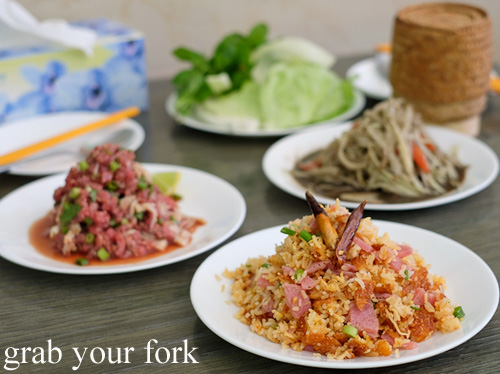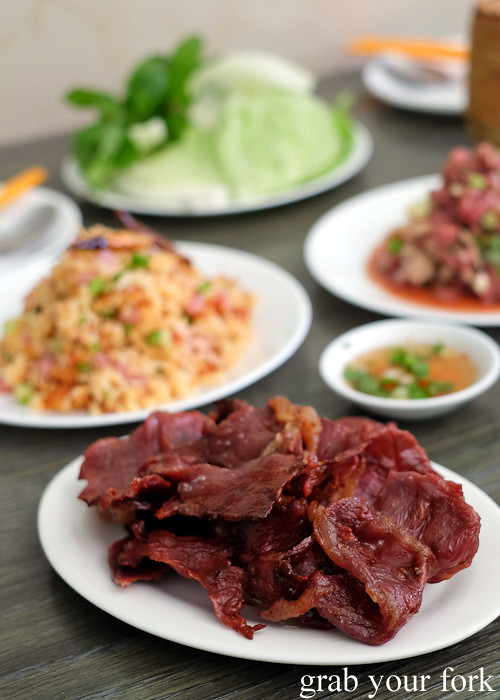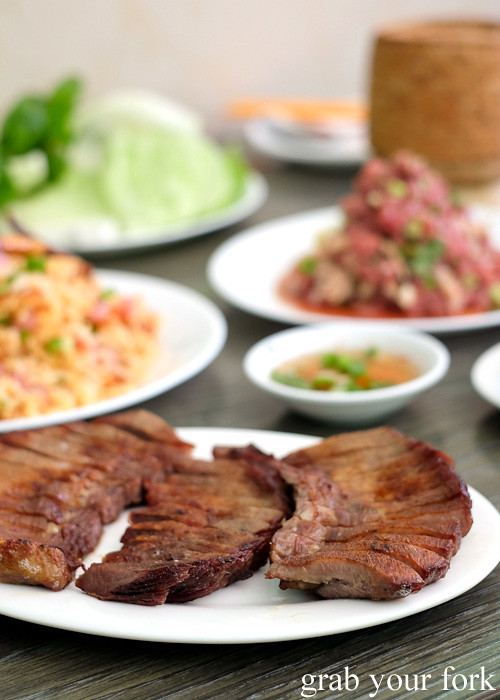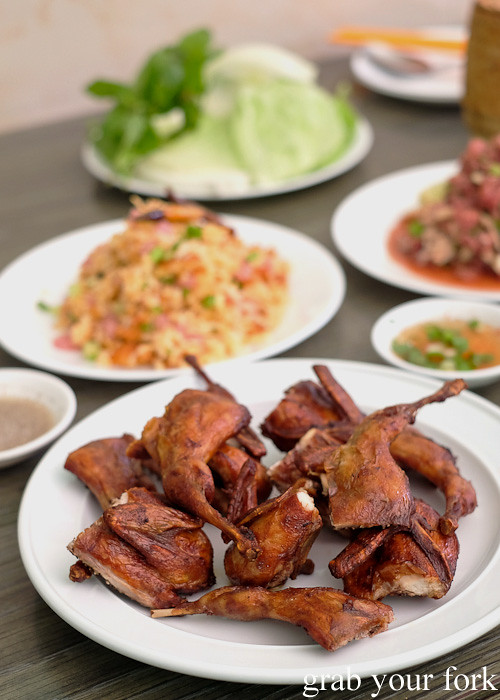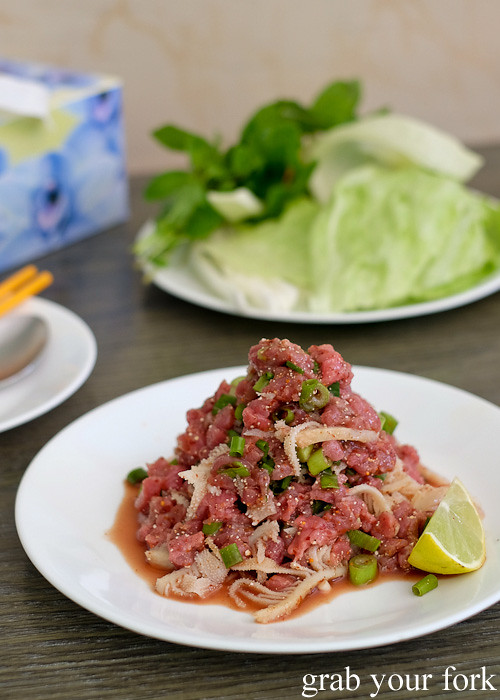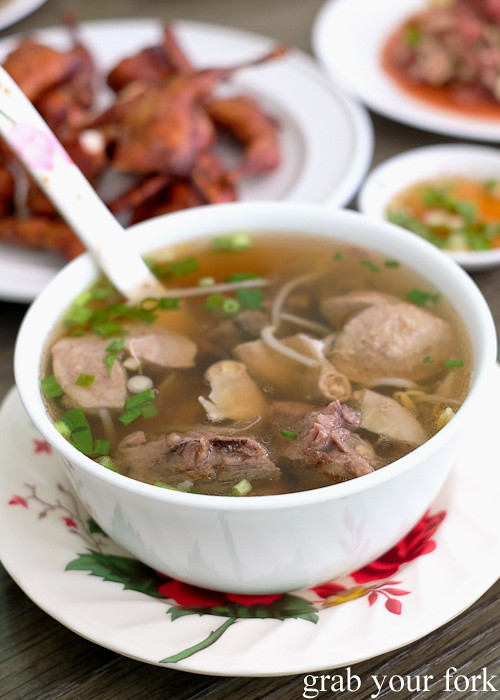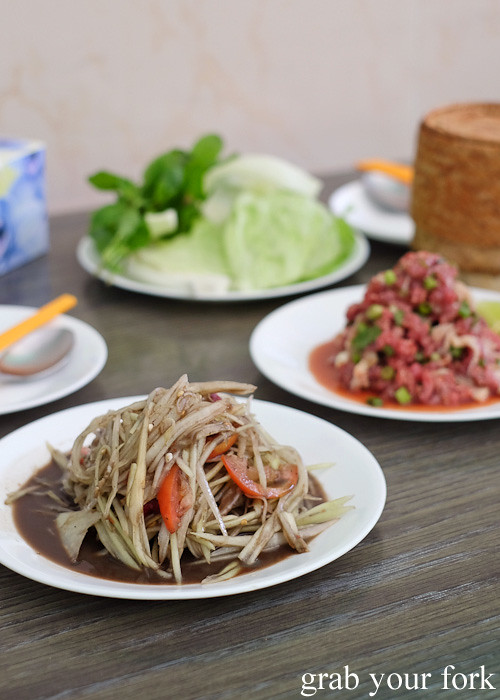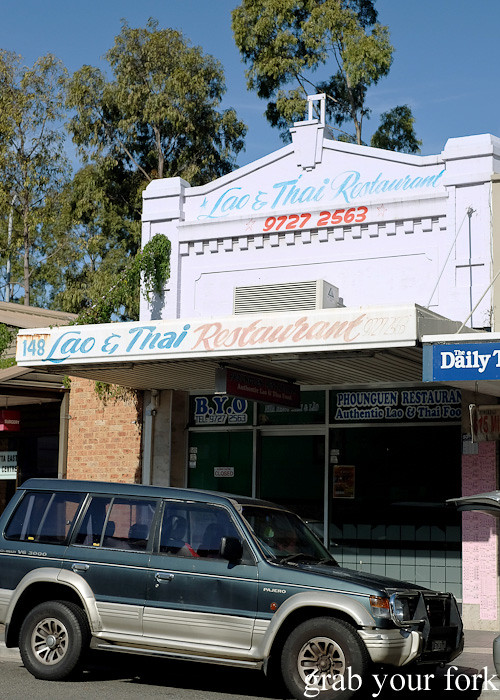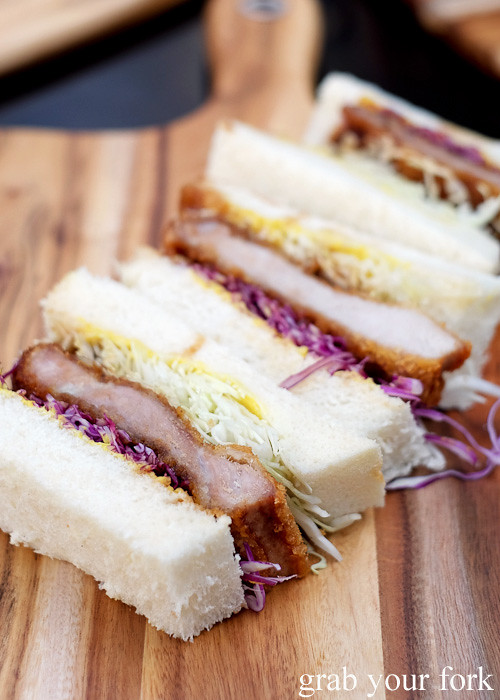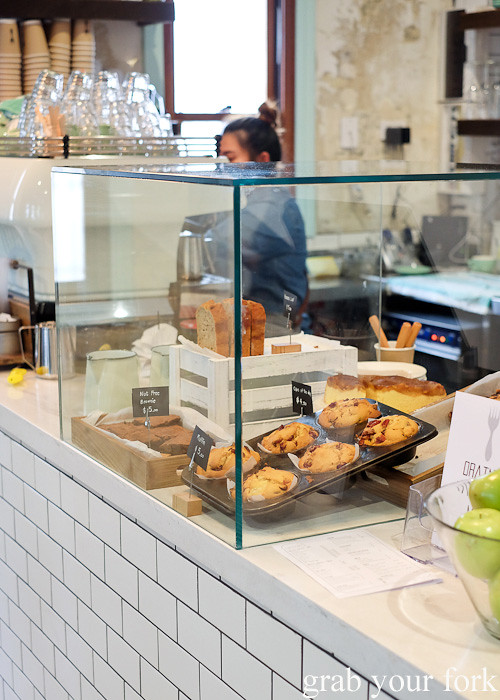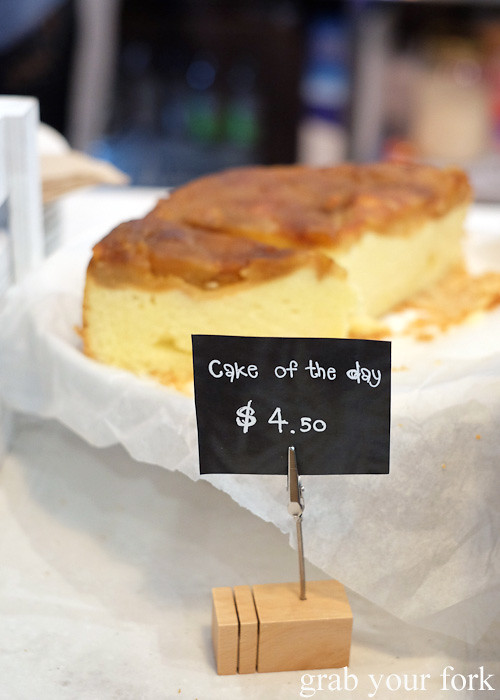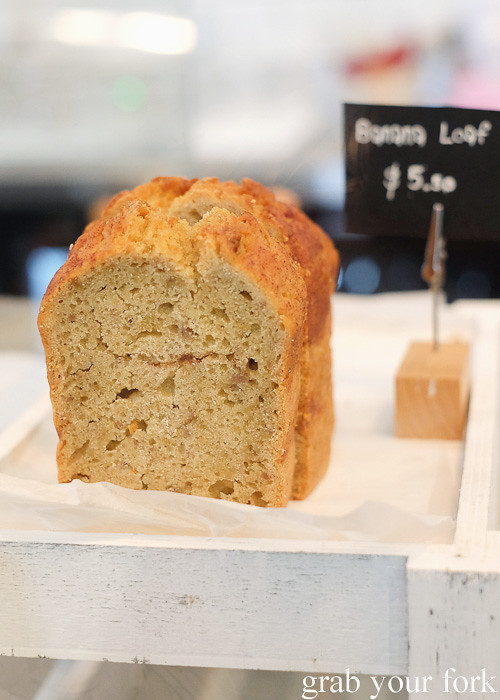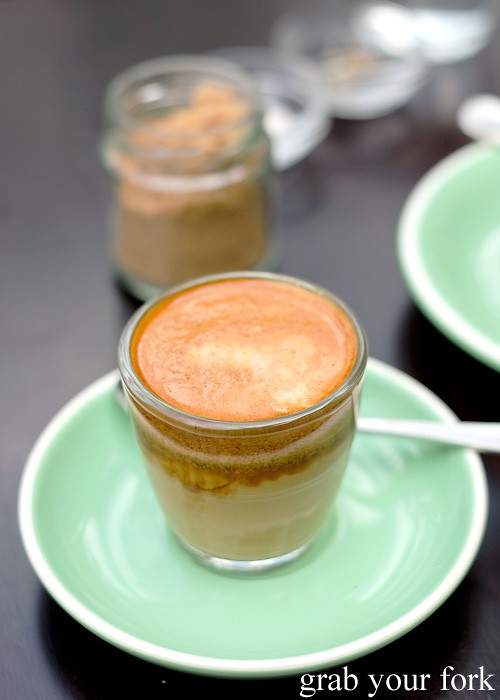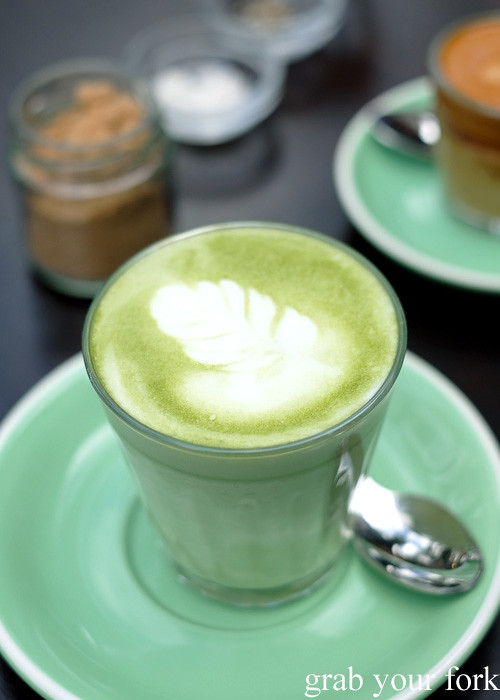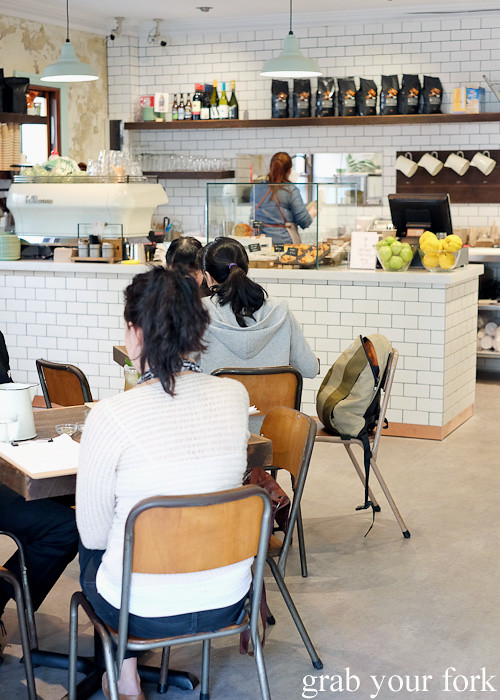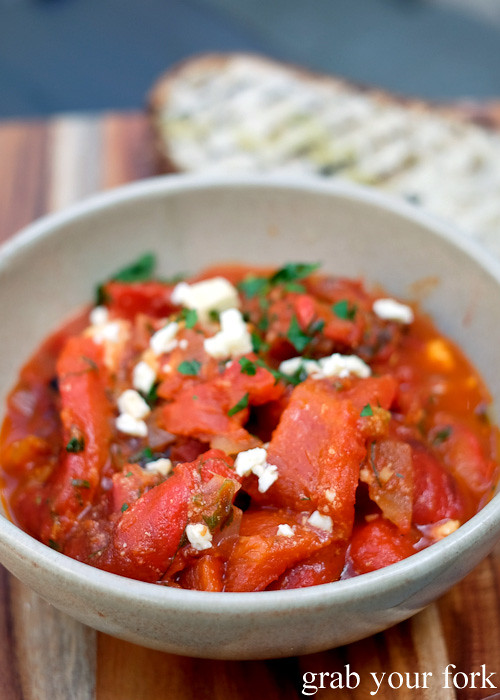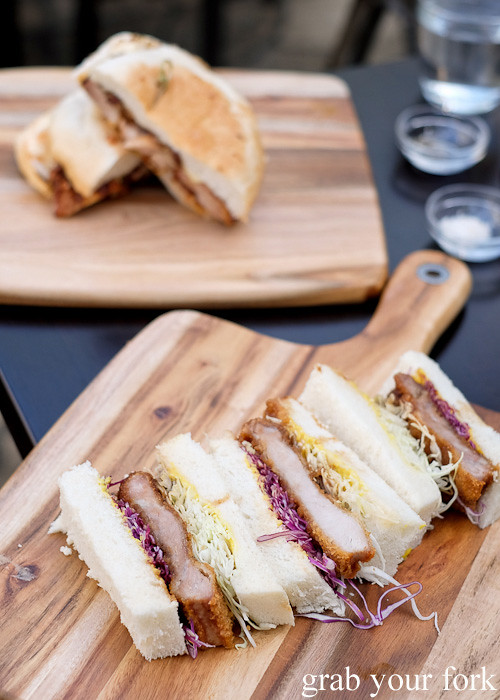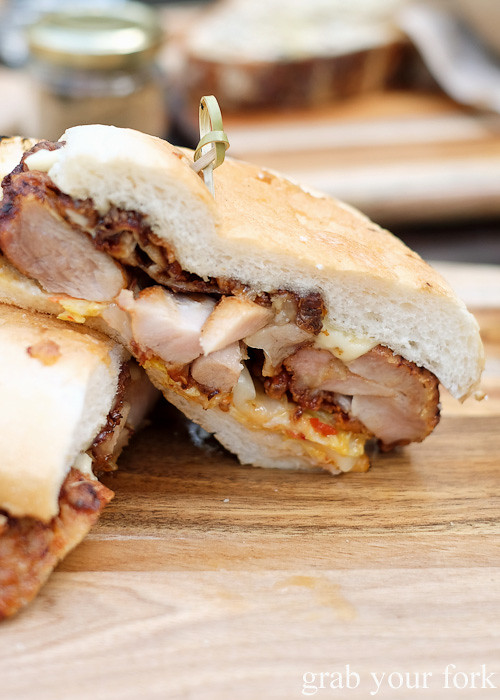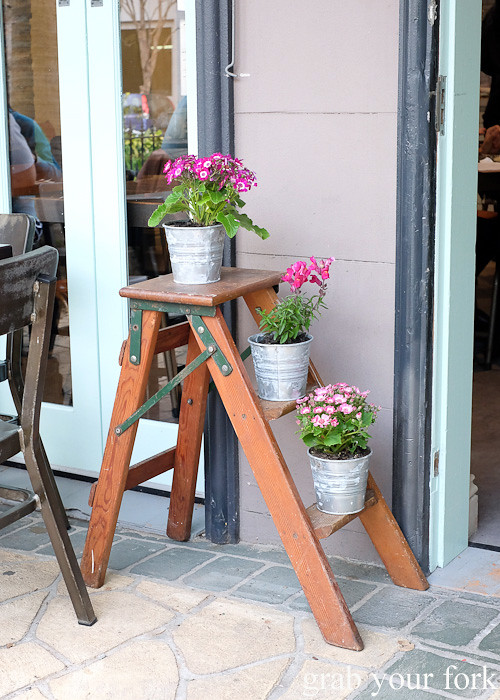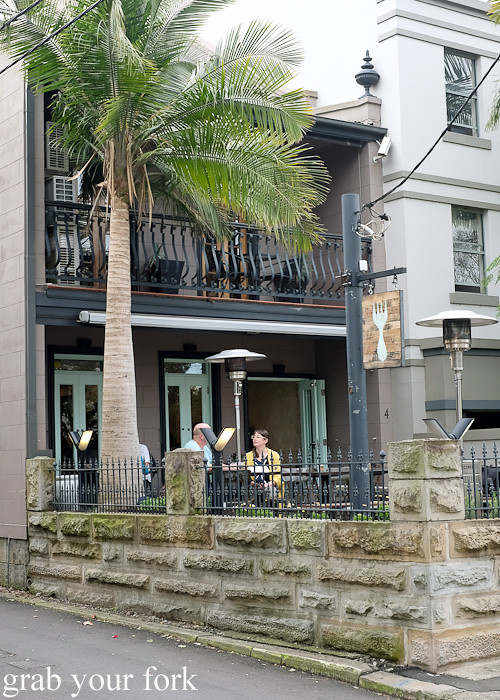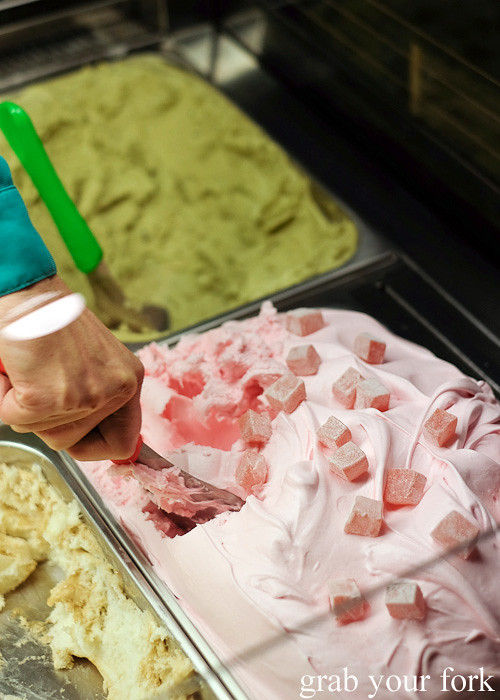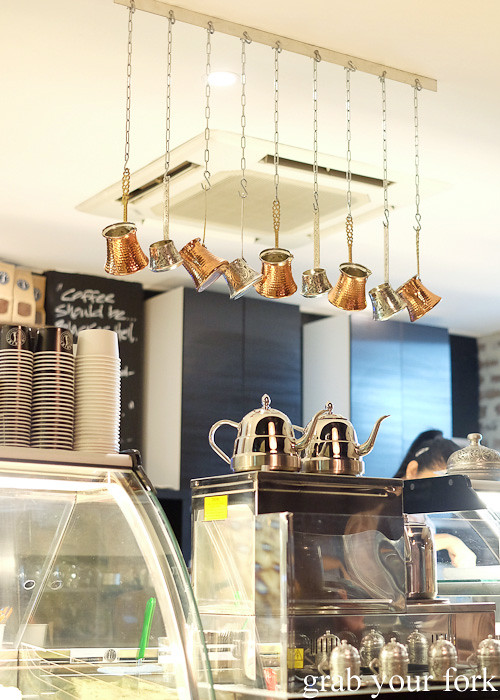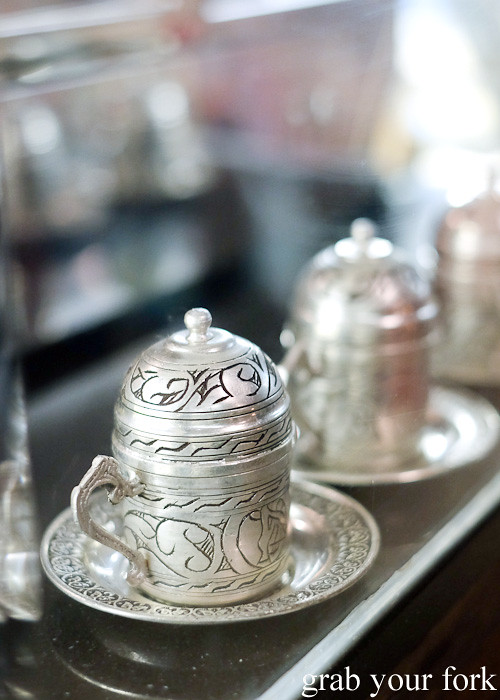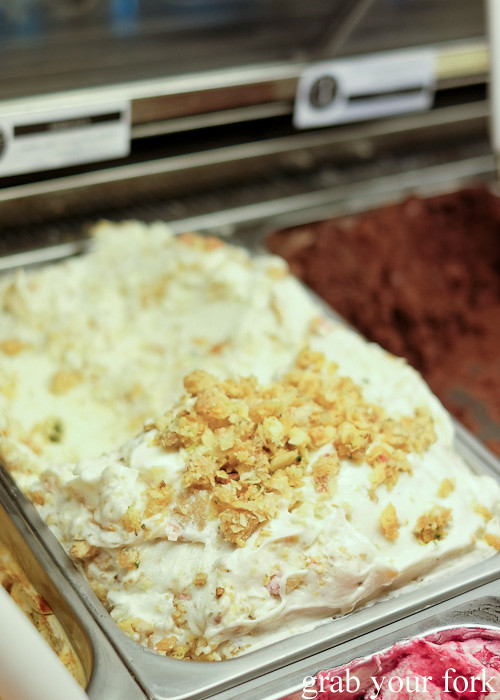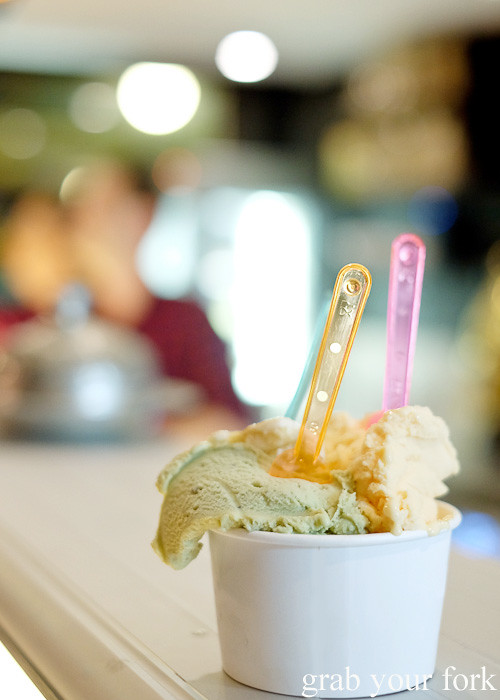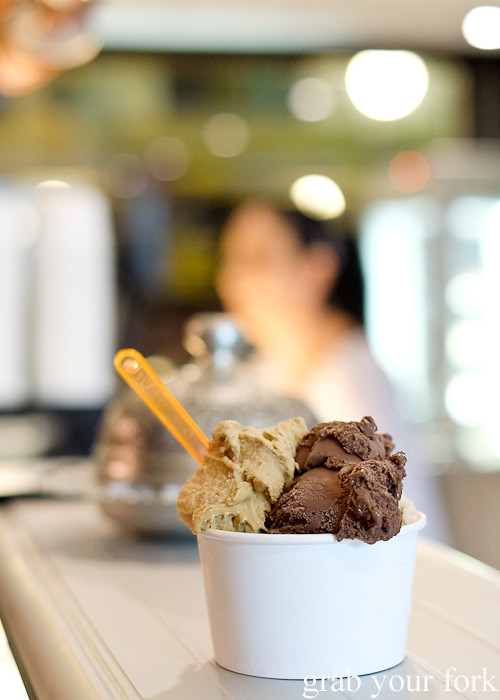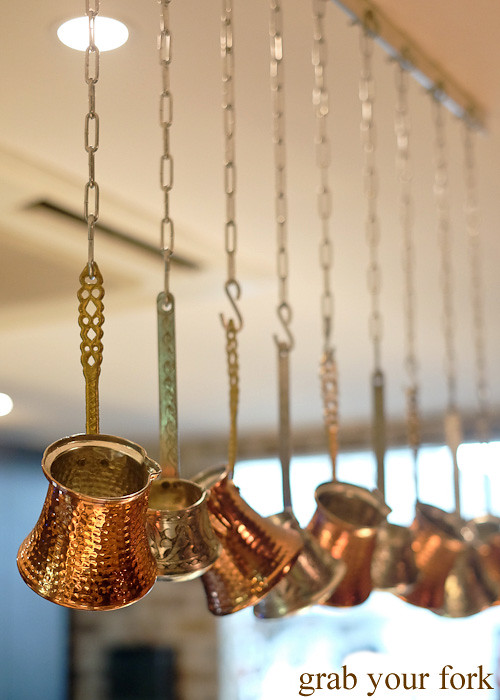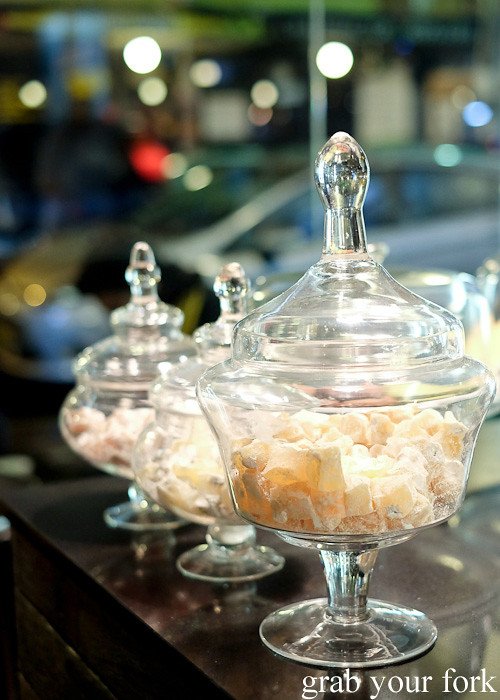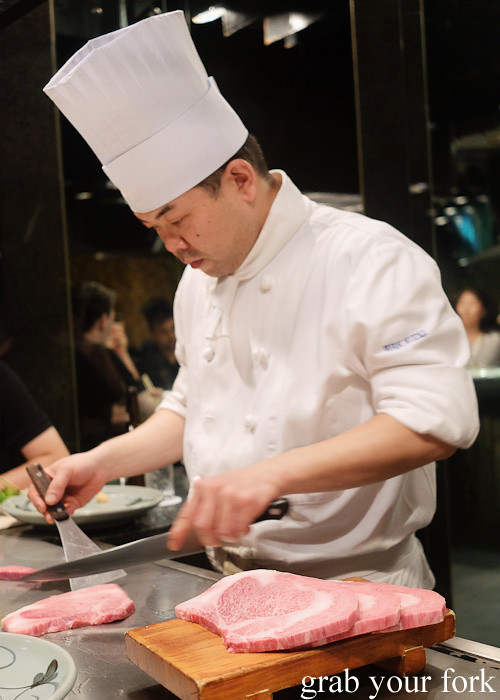 Kobe beef.
Kobe beef. Two words that are guaranteed to make any carnivore weak at the knees. The spidery white ribbons of fat that marble this beef break down with heat, permeating its way into every fibre so each tender bite surges with juiciness. Kobe beef is highly prized in Japan but it doesn't have to be expensive. You can feast on a two-hour meal of Kobe beef for less than AU$60, and roll out completely satiated.
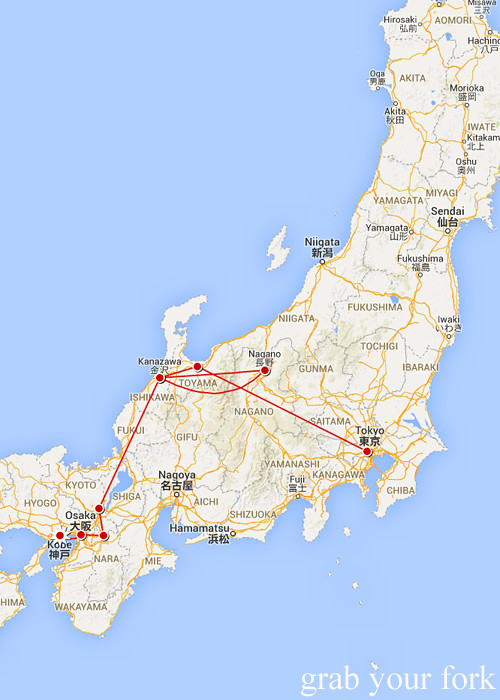 Mapping our Osaka to Kobe leg of our Japan trip that started in Tokyo
Mapping our Osaka to Kobe leg of our Japan trip that started in Tokyo
The best way to eat Kobe beef is to go straight to the source. We made a day trip to Kobe from Osaka, only a 15 minute shinkansen bullet train.
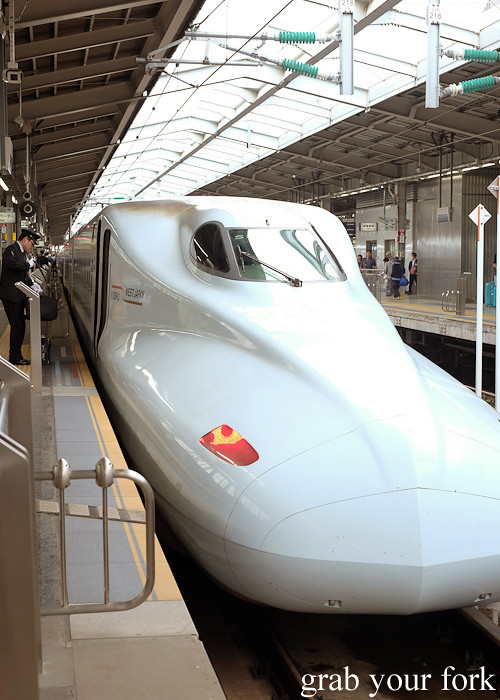 Sakura 555 N700 series JR Kyushu shinkansen bullet train
Sakura 555 N700 series JR Kyushu shinkansen bullet train
The Sakura 555 N700 shinkansen is ridiculously sleek and a little bit sexy, reaching top speeds of 330 kilometres per hour. We always love travelling by shinkansen in Japan, making full use of our
JR passes wherever possible. JR Passes are pre-purchased tickets available to tourists outside of Japan, and enable unlimited travel on the Japan Rail network for either 7, 14 or 21 days. We find JR trains are always clean, quiet and ferociously on-time.
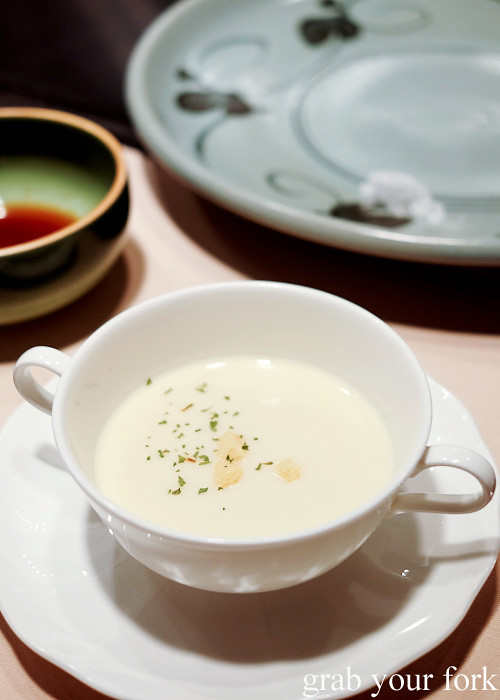 Soup of the day: cream of potato
Wakkoqu
Soup of the day: cream of potato
Wakkoqu is one of Kobe's most famous Kobe beef restaurants. There are two restaurants in Kobe - one in the main city centre of Kitanozaka, the other in a shopping centre just across the road from Shin Kobe station. If you're only in Kobe for a flying visit, Shin Kobe is easier to access as it's a direct stop on the shinkansen line.
It's not entirely cheap to eat here. The Wakkoqu menu starts at 7,800 yen / AU$86 for the 180 gram sliced roast Kobe beef sirloin set and tops out at 13,800 yen / AU$150 for either the 250 gram Kobe special beef sirloin set or the 220 gram Kobe special beef tenderloin.
There is one massive budget saving trick. Go at lunchtime and you'll only pay 5,280 yen / AU$58 for a multi-course set meal that includes 150 grams of Kobe beef sirloin.
 Frying the garlic slices on the teppanyaki
Frying the garlic slices on the teppanyaki
We chanced on lunch here without a booking and had to wait two hours for a table. We end up getting seated in only 90 minutes though, swept into a subdued dining room filled with teppanyaki hot plate grills clustered around with mix of well-heeled Japanese and several groups of tourists.
This is the second time I've been here, but the experience is just as mind-blowingly impressive. The show begins with our personal chef for the meal, working with quiet diligence. He slices cloves of garlic with machine gun speed and sniper accuracy and then splays them in a single layer on the teppanyaki flat top grill.
Bowls of soup materialise on our table - a lush and silky
cream of potato soup - that we sip daintily while we watch the show unfold before our eyes. Our chef keeps a keen eye on the garlic, flipping them one by one at just the right moment, when the garlic has sizzled long enough in the shimmering oil to turn a golden shade of brown.
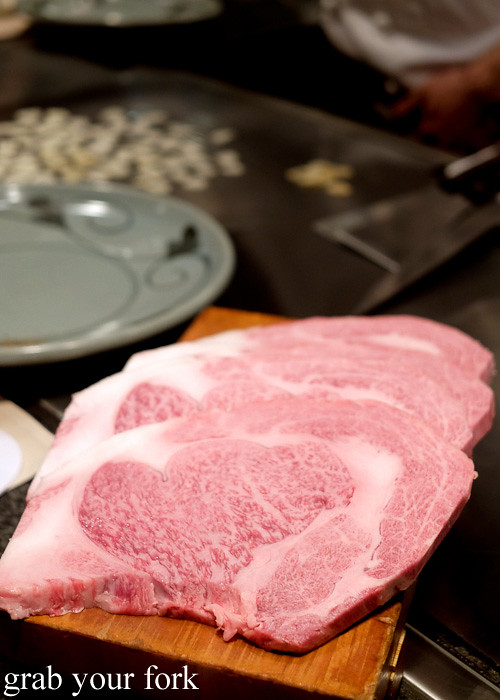 Kobe wagyu beef sirloin - 150g per person
Kobe wagyu beef sirloin - 150g per person
But our eyes never wander far from the star, thick slabs of Kobe wagyu beef sirloin that are visually stunning with their intricate marbling and thick casing of fat.
What's the difference between wagyu beef and Kobe beef? Wagyu beef does not describe a single breed of cattle. Wagyu beef can be full-blood Japanese black cattle, but it also can refer to a cross-breed of full-blood Wagyu with other types of cattle. Kobe beef, on the other hand, is a registered trademark that is strictly governed, sourced from Tajima Japanese black cattle that is bred, raised and slaughtered in Kyogo prefecture, the capital of which is Kobe.
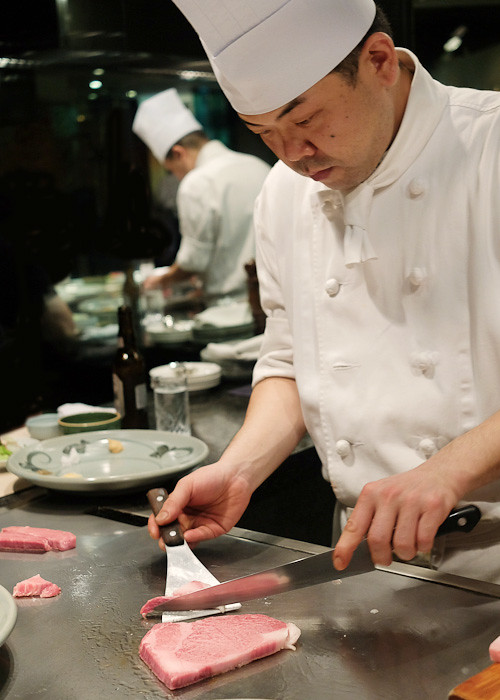 Dissecting the wagyu sirloin
Dissecting the wagyu sirloin
Our chef dissects the sirloin directly on the grill. It's not going to be cooked as a whole slab, but broken down into specific components, each of which will have different recommendations for seasoning.
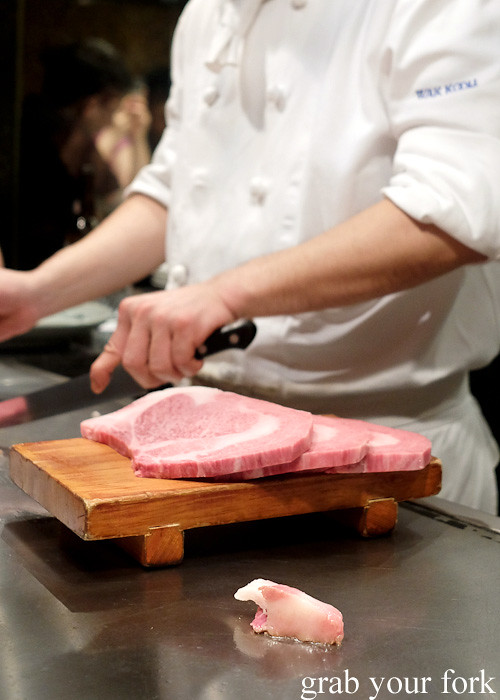 Kobe wagyu beef sirloin fat on the grill
Kobe wagyu beef sirloin fat on the grill
The thickest and hardest piece of fat is something most diners would discreetly cut around and leave behind. Here it's a prized trophy, set aside to sizzle so the fat renders slowly.
 The Kobe wagyu sirloin being separated into different cuts
The Kobe wagyu sirloin being separated into different cuts
It's incredible to watch one piece of sirloin treated with alarming accuracy, portioned out into distinct groups that have a similarity only noticeable when you see them piled together.
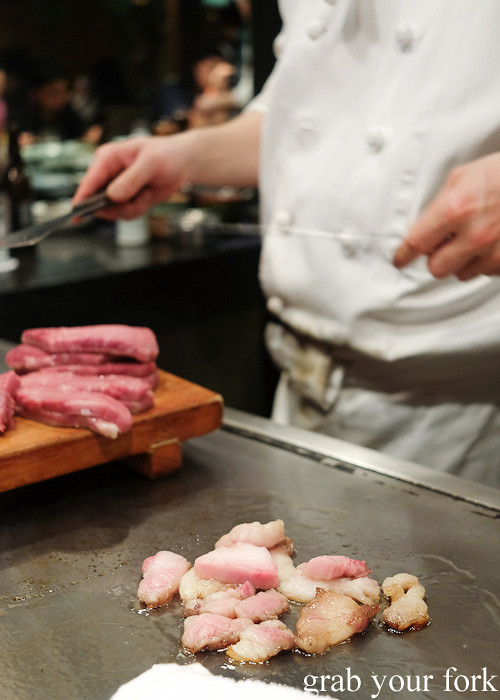 Kobe wagyu beef sirloin fat sizzling on the teppanyaki
Kobe wagyu beef sirloin fat sizzling on the teppanyaki
The pile of fat offcuts grows in size, slowly changing colour from a creamy white to a deep golden brown. If only you could smell this photo. Hiss. Sizzle. Pop.
 Crispy garlic chips
Crispy garlic chips
We're provided with a range of seasonings, including garlic chips, sansho pepper, salt, mustard and a ponzu dipping sauce. At first we're given deliberate instructions on which accompaniment should go with each cut, but after five rounds, we're given free creative rein.
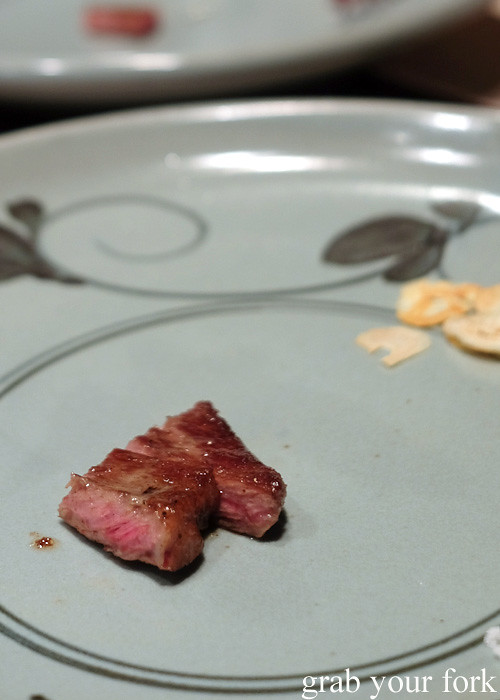 Kobe wagyu beef sirloin to be eaten with salt
Kobe wagyu beef sirloin to be eaten with salt
The first pieces of meat to hit our plate have a dark crust. We're told solemnly to eat this with salt only, an addition to magnifies the buttery and caramelised flavour of the beef significantly.
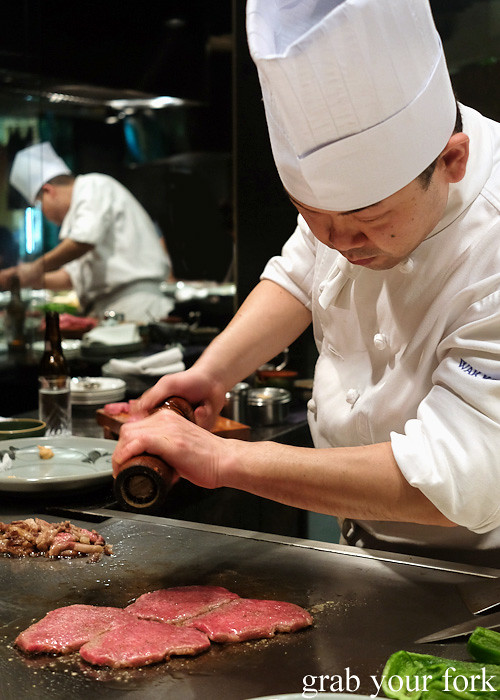 Seasoning the sirloin steaks
Seasoning the sirloin steaks
The Kobe beef show continues. Every five minutes we're given a different part of the sirloin. Some are chewier than others, others more tender. Each piece has been seared to a medium rare, so the flesh is still bouncy with a plump softness.
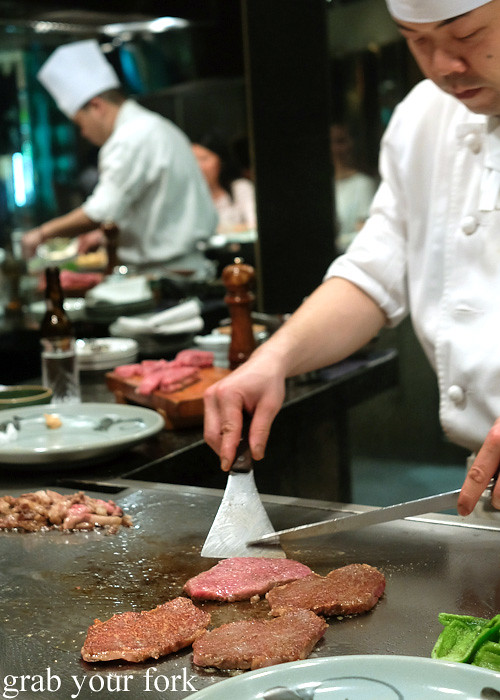 Flipping the seared sirloin steaks
Flipping the seared sirloin steaks
The heat of the grill is beautifully hot and even. The sear of the surface of the meat is a consistent dapple of browns and golds.
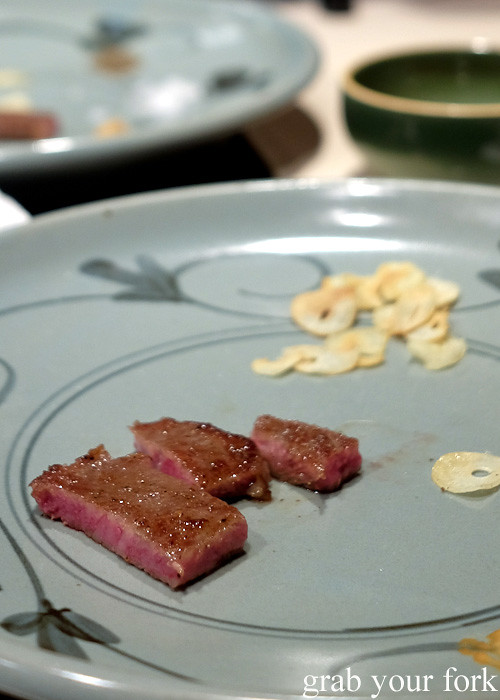 That fatty marbling
That fatty marbling
There are moments when everything seems to stop as you survey your next mouthful. The deep pink blush of the marbled beef is a sight worth stopping to appreciate deeply before you pop it into your mouth, close your eyes and feel its fatty succulency drench from you the inside-out.
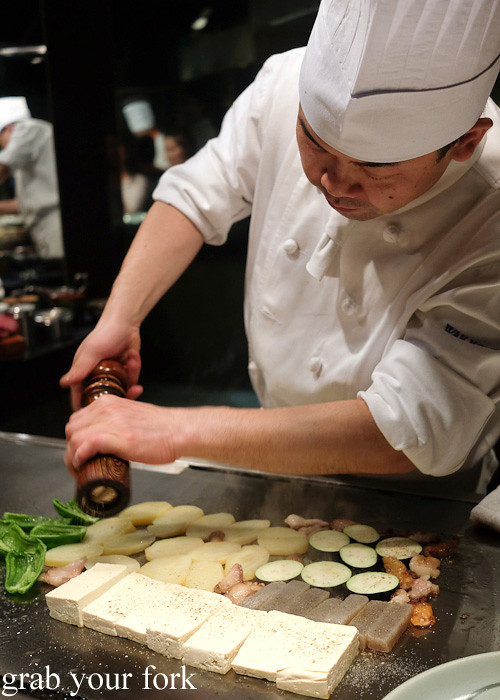 Seasoning the vegetable medley
Seasoning the vegetable medley
Our set meat includes a vegetable medley, an assortment of
green capsicum,
potato and
zucchini plus
tofu and
konnyaku, a wobbly jelly-like cake made from elephant yam.
 Golden brown potatoes, zucchini, konjac and tofu seasoned with beef fat
Golden brown potatoes, zucchini, konjac and tofu seasoned with beef fat
These are cooked on the teppan grill, seasoned with wagyu beef fat for extra flavour.
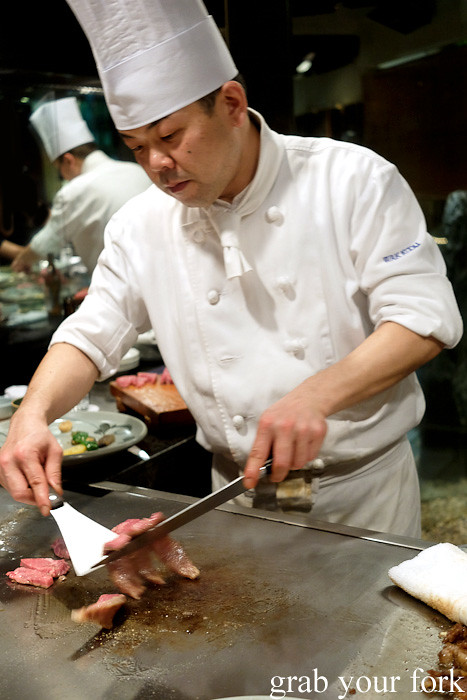 Flipping several slices of seared Kobe wagyu beef sirloin
Flipping several slices of seared Kobe wagyu beef sirloin
I don't want this show to end, but at the same time, our stomachs are starting to struggle. We sit back and watch each deft moment with growing appreciation, the meat handled and flipped with such precision it feels like a choreographed ballet performance.
 Searing the fattiest and most tender pieces
Searing the fattiest and most tender pieces
Our lunch crescendoes to the
fattiest and most tender pieces of the sirloin. You can see these pieces from the top of the sirloin are paler than the others, promising maximum pleasure.
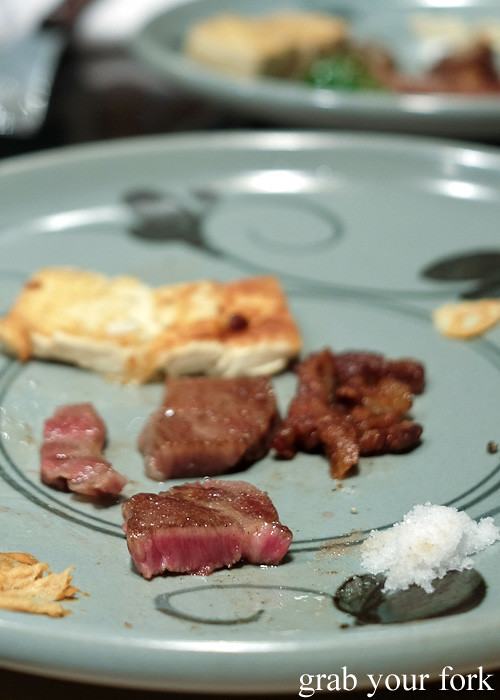 The top of the sirloin, s tender you could cut it with a plastic spoon
The top of the sirloin, s tender you could cut it with a plastic spoon
It's a worthy climax. Everyone is taken aback by this final mouthful of meat. It's so incredibly tender you could cut it with a plastic spoon. Halfway between meat and pure fat, this is the most succulent and indulgent morsel of beef I've ever eaten. You don't even need to chew. It's like every protein strand is enveloped in lusciousness, slipping down your throat far too quickly.
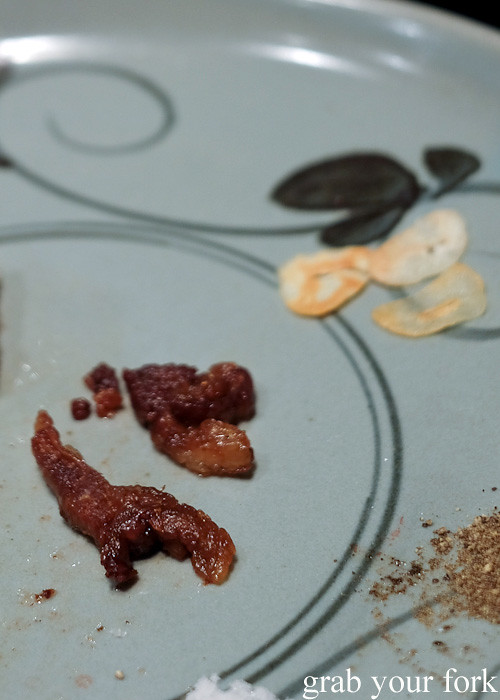 Crispy beef fat
Crispy beef fat
And then there are the nuggets of beef fat, super crisp and a deep brown that taste exactly like
beef crackling. There's no greasy fat remaining, just a crunch of intensely beefy deliciousness.
 Preparing the beef fat fried rice
Preparing the beef fat fried rice
We go with the optional
fried rice for an extra 900 yen / AU$10 per person. A huge pile of fluffy white rice is added to the grill with finely chopped shallots and vegetables.
 Adding salt by tapping a salt dusted spatula across the top
Adding salt by tapping a salt dusted spatula across the top
Even watching the chef make fried rice is a spectacle. He pours salt onto the grill, divides it up into little rectangles, and then scoops up sections of it with a spatula, gently tapping it to scatter the salt evenly over the fried rice. Tossed throughout the fried rice is the rendered beef fat offcuts from before, all crunchy and golden.
 Golden fried rice seasoned with Kobe wagyu beef fat
Golden fried rice seasoned with Kobe wagyu beef fat
Everyone needs a flat top grill to cook fried rice. Our bowl is piled with fried rice grains that are uniformly golden. There's no steaming from overcrowded. Each grain is separate and chewy. Every mouthful has pops of crunchy beef fat.
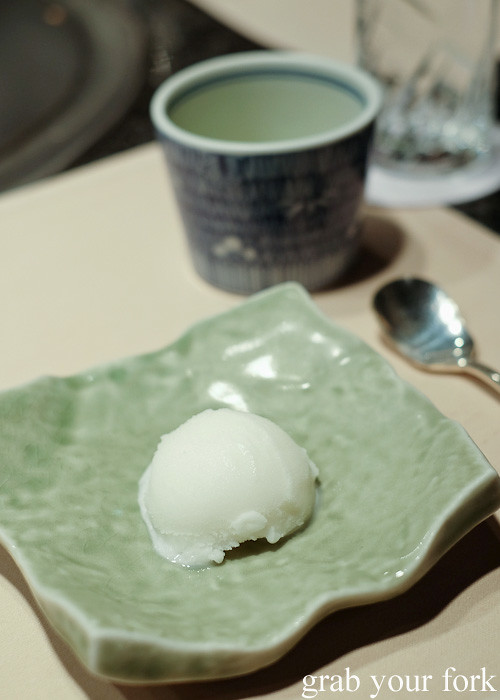 Dessert: grapefruit sorbet
Dessert: grapefruit sorbet
The included dessert is a grapefruit sorbet, exactly the kind of bitter and palate-cleansing refreshment you need after such a rich meal.
Konditorei Kobe
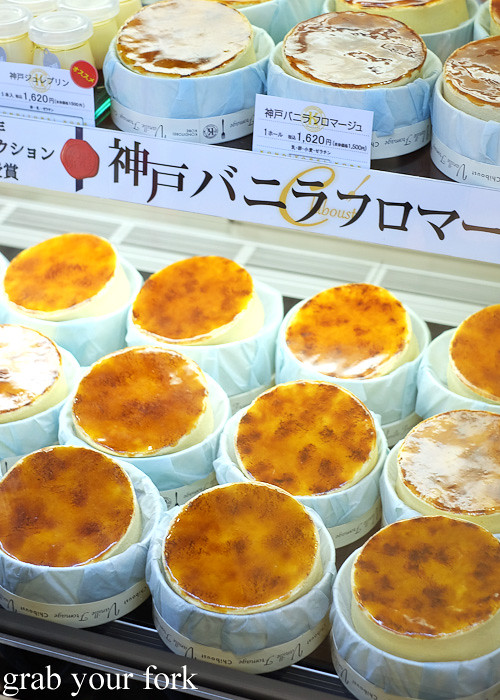 Vanilla fromage Japanese cotton cheesecake from Konditorei Kobe
Vanilla fromage Japanese cotton cheesecake from Konditorei Kobe
And if you're heading back to Shin Kobe station, it would be remiss not to pick up one of Kobe's other famous highlights - the
vanilla fromage cheesecake from
Konditorei Kobe. Like so many lauded food souvenirs in Japan, these are presented with utmost reverence. And because the Japanese are so practical in everything they do, the cheesecakes are ready frozen for easy transport to your next destination. Defrosting will take about three hours, but if your journey is longer, they'll provide you with ice packs.
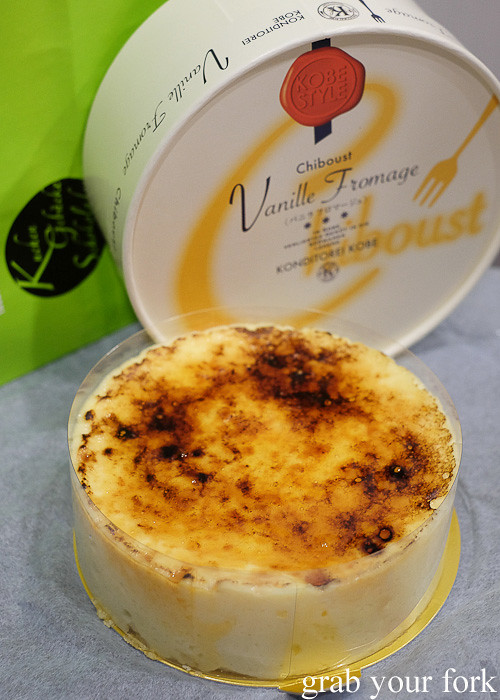 Vanilla fromage chiboust
Vanilla fromage chiboust
We have it as part of our hotel room dessert party that evening. The cheesecake is said to use two types of cream cheese from Australian and France, whipped into a super light and fluffy style of cheesecake that Japanese call cotton cheesecake. It's so-named because the cheesecake should melt on the tongue just like cotton candy, or fairy floss. It does. It's super airy and pillowy soft.
We weren't in you for very long, Kobe, but we think we did good.
Konditorei Kobe
JR Shin-Kobe Station, 1-3-1 Kano-cho, Chuo-ku, Kobe-shi, Hyugo
 Wakkoqu
1-1 Kitanocho, Chuo-ku, Shinkobe Oriental Avenue 3F, Kobe 650-0002
Tel: +81 (078) 262 2838
Open daily 11.45am-10pm
>> Read the next Japan 2015 post: Sashimi chicken, wagyu and Kurobuta pork in Kagoshima
<< Read the first Japan 2015 post: Toyama black ramen and firefly squid
Japan 2015: Toyama > Kanazawa > Nagano > Kyoto > Nara > Osaka > Kobe > Kagoshima > Hakata > Hiroshima and Miyajima Island > Sapporo > Otaru > Hakodate > Tokyo
Wakkoqu
1-1 Kitanocho, Chuo-ku, Shinkobe Oriental Avenue 3F, Kobe 650-0002
Tel: +81 (078) 262 2838
Open daily 11.45am-10pm
>> Read the next Japan 2015 post: Sashimi chicken, wagyu and Kurobuta pork in Kagoshima
<< Read the first Japan 2015 post: Toyama black ramen and firefly squid
Japan 2015: Toyama > Kanazawa > Nagano > Kyoto > Nara > Osaka > Kobe > Kagoshima > Hakata > Hiroshima and Miyajima Island > Sapporo > Otaru > Hakodate > Tokyo
